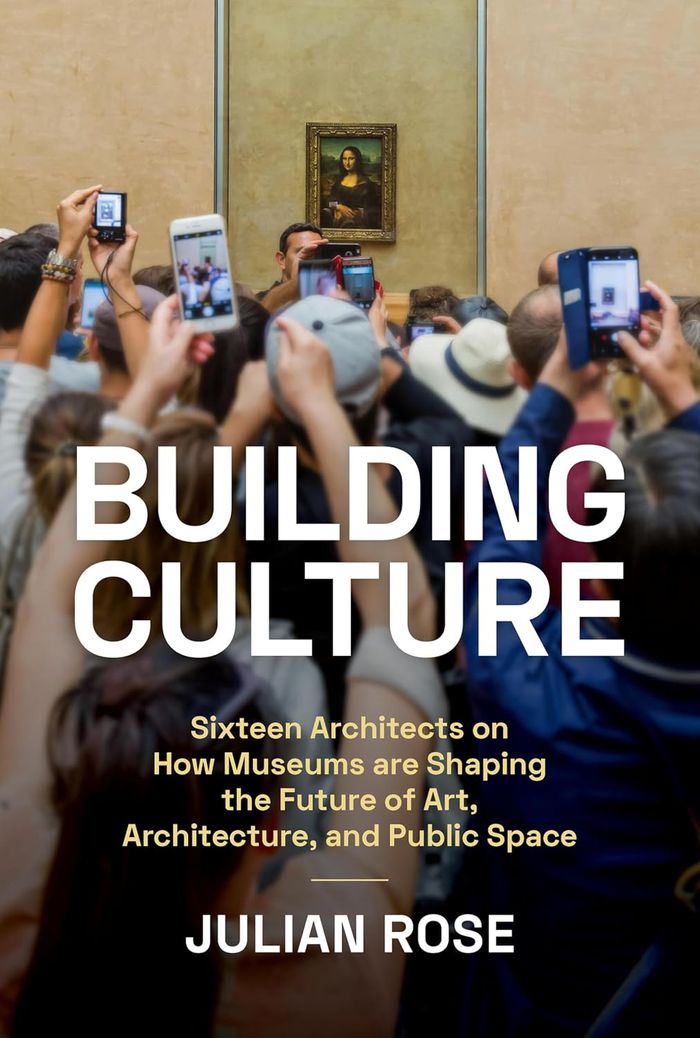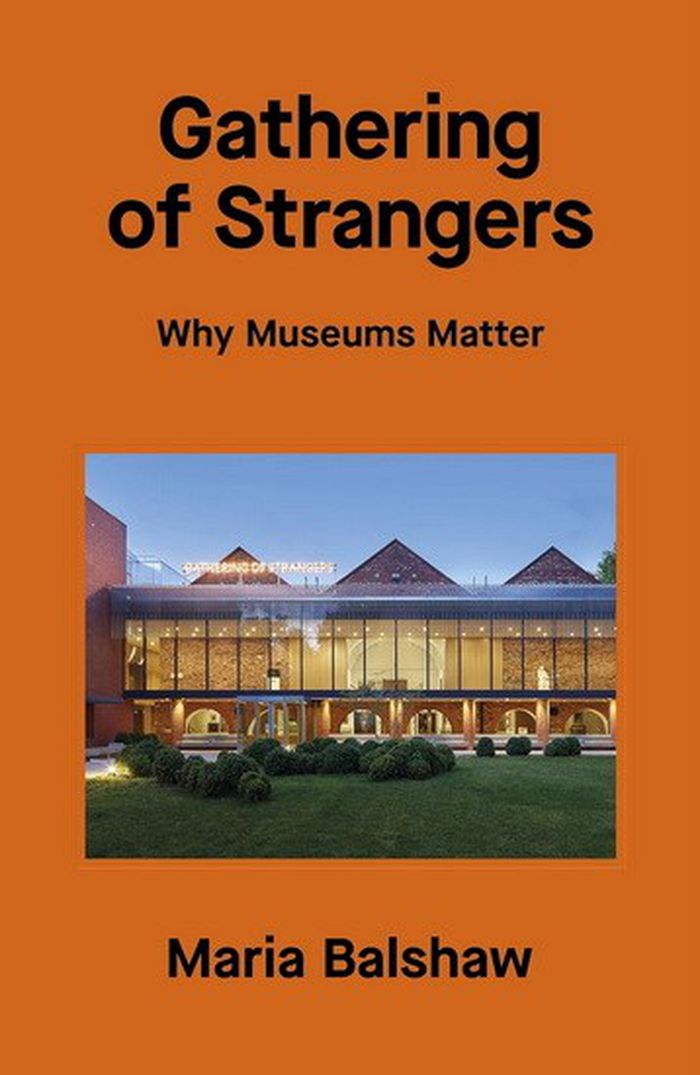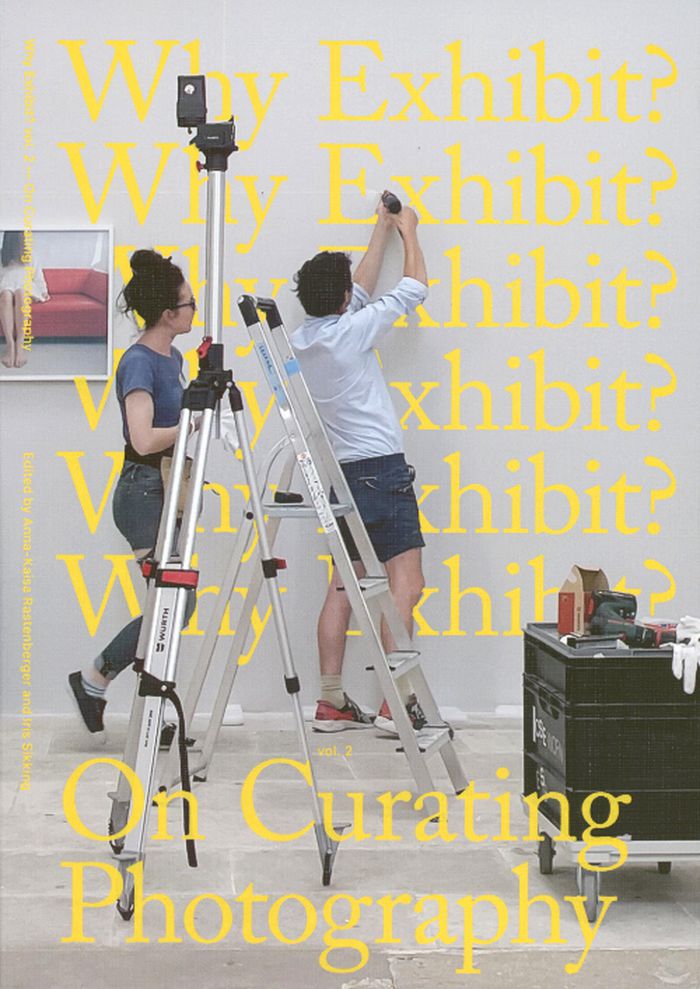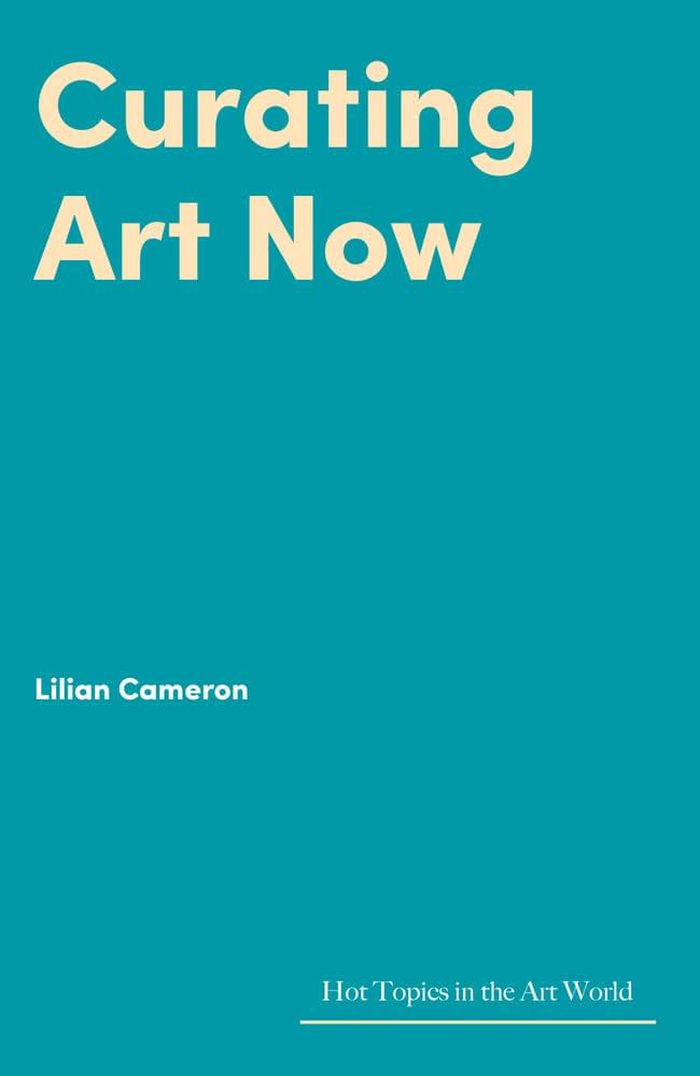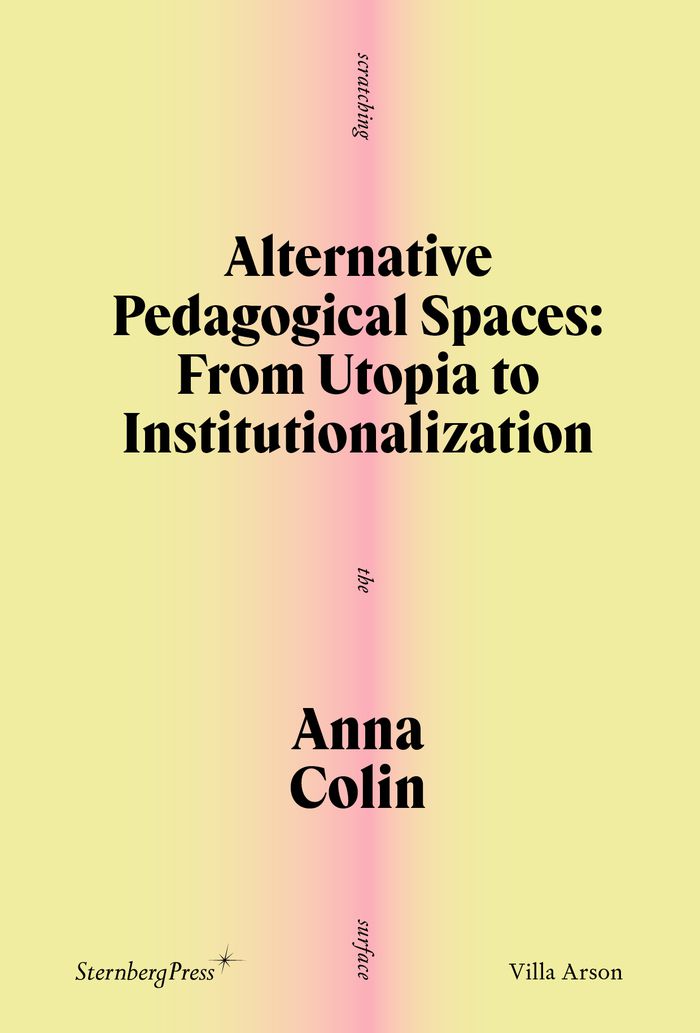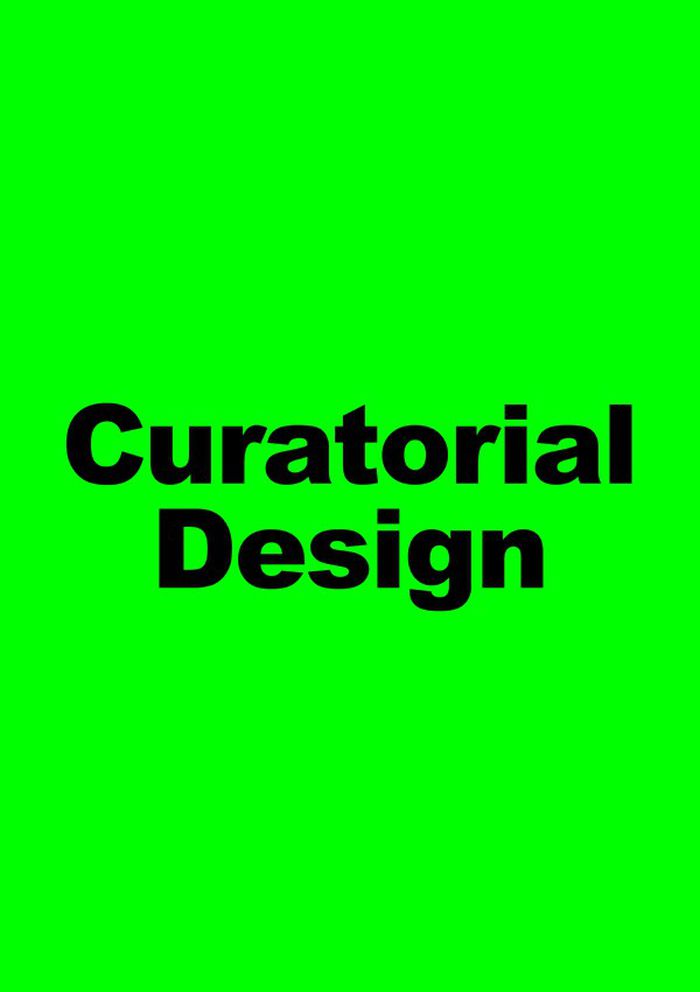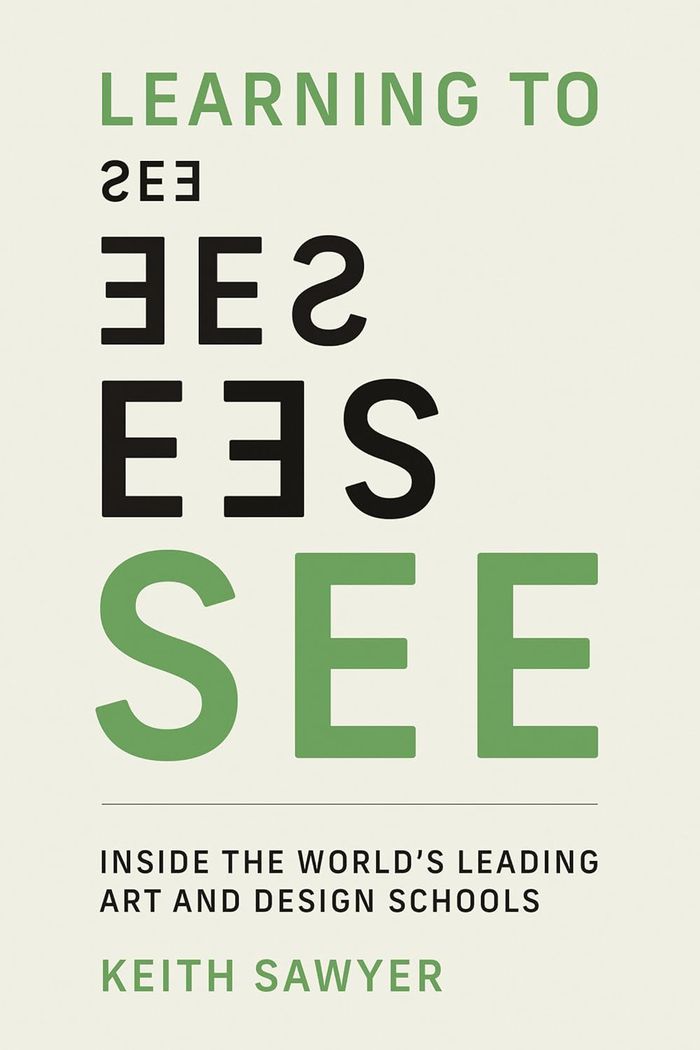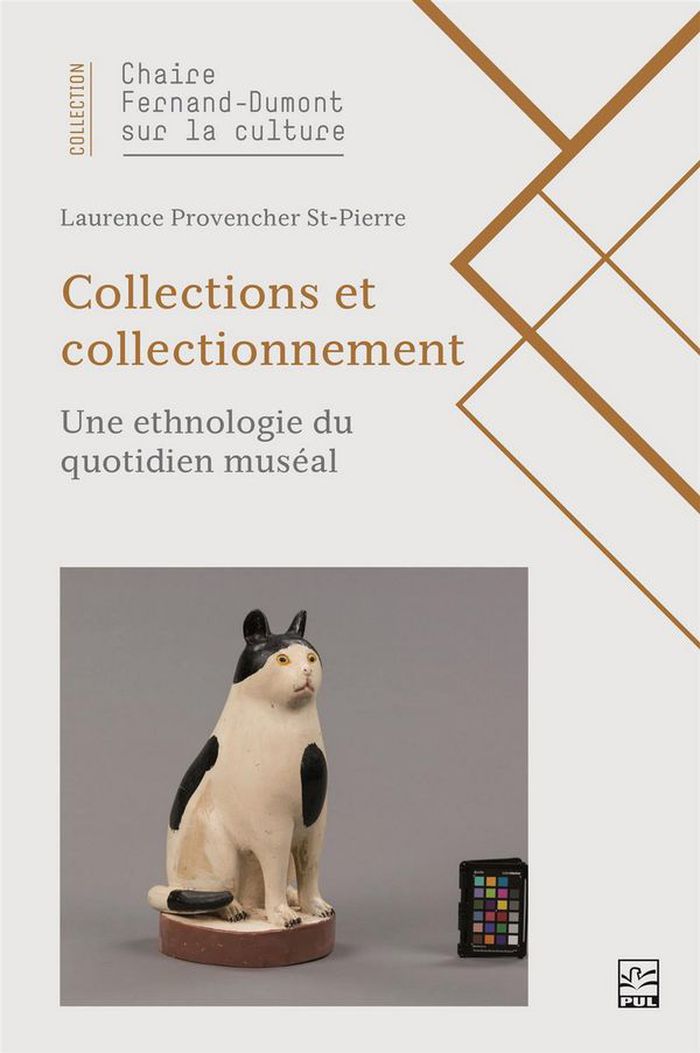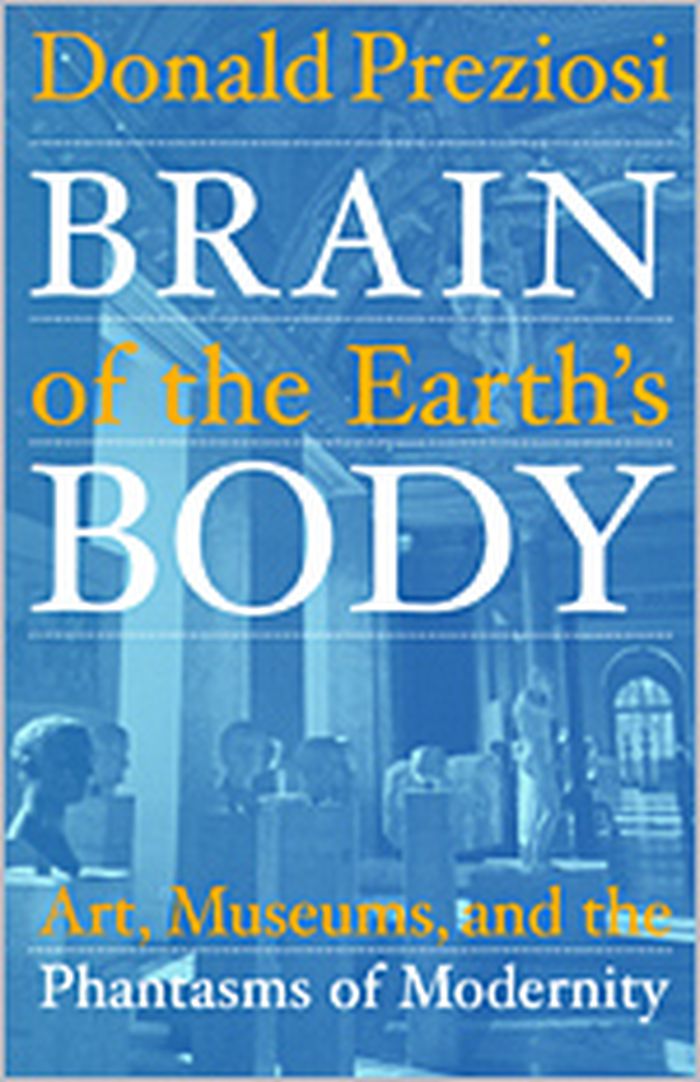$25.95
(available in store)
Summary:
For this fourth volume of the series "Thoughts on Curating", twenty renowned curators and collectives from across the globe write about a single exhibition or curatorial project they created that transformed their thinking and the way they have curated ever since. Their innovations, practical considerations, and ways of grappling with the most urgent issues of the day(...)
Why I do what I do: Twenty global curators speak
Actions:
Price:
$25.95
(available in store)
Summary:
For this fourth volume of the series "Thoughts on Curating", twenty renowned curators and collectives from across the globe write about a single exhibition or curatorial project they created that transformed their thinking and the way they have curated ever since. Their innovations, practical considerations, and ways of grappling with the most urgent issues of the day offer a unique handbook of curatorial ideas—rational and whimsical, poetic and political—and serve as a fascinating record of exhibition-making in the twenty-first century.
Museology
Building culture: Sixteen architects on how museums are shaping the future of art, architecture and
$53.00
(available in store)
Summary:
Architects and art lovers everywhere will enjoy this remarkable collection of interviews from sixteen of the world's most celebrated, thoughtful, and innovative architects who have designed many of the world's greatest museums. Spanning generations, geographies, and methods of architectural practice, these architects share the complex and fascinating process of creating(...)
Building culture: Sixteen architects on how museums are shaping the future of art, architecture and
Actions:
Price:
$53.00
(available in store)
Summary:
Architects and art lovers everywhere will enjoy this remarkable collection of interviews from sixteen of the world's most celebrated, thoughtful, and innovative architects who have designed many of the world's greatest museums. Spanning generations, geographies, and methods of architectural practice, these architects share the complex and fascinating process of creating spaces for art.This compendium reveals intensely varied architectural philosophies from a diverse group of established and up-and-coming professionals. Engaging personal recollections of relationships with artists and curators, along with 80 captivating images, provide further insight into the design process and timeless inspiration for architecture students, artists, museum professionals, and anyone fascinated by architectural design, public space, and museum culture.
Museology
$31.99
(available in store)
Summary:
As the world adapts to the consequences of a global pandemic, museums continue to experience unprecedented disruption and change. At the same time, there is a growing debate and dissent over what museums are for, who they speak to, and what the histories, objects, and ideas they are tasked with holding reflect—all taking place within a public sphere that feels(...)
Gathering of strangers: Why museums matter
Actions:
Price:
$31.99
(available in store)
Summary:
As the world adapts to the consequences of a global pandemic, museums continue to experience unprecedented disruption and change. At the same time, there is a growing debate and dissent over what museums are for, who they speak to, and what the histories, objects, and ideas they are tasked with holding reflect—all taking place within a public sphere that feels increasingly dynamic and volatile. Taking a wide-ranging and thought-provoking look at the roles and responsibilities of some of our most well-known and best-loved public institutions, ''Gathering of Strangers'' explores the critical challenges and opportunities for the museum at this point in the twenty-first century. Moving from the historical origins of the gallery to important current debates taking place around art and public engagement, the climate emergency, race equality and decolonization, and the value of the arts in education—this book sets out the role of art and artists in imagining and shaping our collective future. It is also a love letter to the museum, from a sector leader who is at the forefront of the cultural conversation today.
Museology
$53.00
(available in store)
Summary:
A discussion on curatorial practices around photo-based images, centred on the current challenges faced by curators and artist working with photography. How do they navigate its constantly changing appearance? How are issues of representation dealt with? And what kind of mediation is necessary while seeking new forms of authorship and interaction with audiences? Offering(...)
Why exhibit? vol. 2 : On curating photography
Actions:
Price:
$53.00
(available in store)
Summary:
A discussion on curatorial practices around photo-based images, centred on the current challenges faced by curators and artist working with photography. How do they navigate its constantly changing appearance? How are issues of representation dealt with? And what kind of mediation is necessary while seeking new forms of authorship and interaction with audiences? Offering insights into a wide range of experiences, reflections, and views from various curators, writers, and researchers, this book focuses on practical perspectives intertwining photography and curation – conversations which are vital for curating photography in light of pressing issues surrounding the medium.
Museology
Curating art now
$46.99
(available to order)
Summary:
''Curating Art Now'' is a timely reflection on the practice of curating and the role of the art curator during a period of rapid change. Curating has a pivotal position in the art world: it is embedded in the identity and expertise of the museum and plays an ever-increasing role in the commercial art sector too. Current curatorial practice encompasses a wide range of(...)
Curating art now
Actions:
Price:
$46.99
(available to order)
Summary:
''Curating Art Now'' is a timely reflection on the practice of curating and the role of the art curator during a period of rapid change. Curating has a pivotal position in the art world: it is embedded in the identity and expertise of the museum and plays an ever-increasing role in the commercial art sector too. Current curatorial practice encompasses a wide range of activities, from the care of collections in museums to the presentation of large-scale contemporary biennials, and from collaboration with artists to presentations of work on digital platforms.
Museology
$21.99
(available in store)
Summary:
Grounded in empirical research, 'Alternative pedagogical spaces: From utopia to institutionalization' is a critical inquiry into the establishment, development, and transformation of alternative pedagogical and social spaces. Written by Anna Colin, a former director and co-founder of Open School East, an independent art school and community space founded in London in(...)
Alternative pedagogical spaces: From utopia to institutionalization
Actions:
Price:
$21.99
(available in store)
Summary:
Grounded in empirical research, 'Alternative pedagogical spaces: From utopia to institutionalization' is a critical inquiry into the establishment, development, and transformation of alternative pedagogical and social spaces. Written by Anna Colin, a former director and co-founder of Open School East, an independent art school and community space founded in London in 2013, this essay-length book explores the instituting factors, organizational life cycles, and alignments and misalignments between values and practices that permeate such a project. The essay delves into the qualities and prerequisites for what Colin calls "multi-public educational organizations." It also scrutinizes the hurdles associated with the effort to remain alternative, including processes of habituation, temptation or pressure to scale up, ethos-bending fundraising exercises, and long tenure, as well as the plain desire for stability and sustainability.
Museology
$65.95
(available in store)
Summary:
Architectural design and the curatorial share a non-disciplinary background, and aim to assemble diverse forms of knowledge rather than specializing. Inherently transdisciplinary, then, they are at odds with the increasing division of labor in all fields of knowledge and practice. In the face of professionalization, which limits our capacity to intervene comprehensively,(...)
Curatorial design: A place between
Actions:
Price:
$65.95
(available in store)
Summary:
Architectural design and the curatorial share a non-disciplinary background, and aim to assemble diverse forms of knowledge rather than specializing. Inherently transdisciplinary, then, they are at odds with the increasing division of labor in all fields of knowledge and practice. In the face of professionalization, which limits our capacity to intervene comprehensively, design and the curatorial challenge specialization and produce relational knowledge. They intend to create an in-between place, as together they form a novel practice that—in combining heterogenous forms of knowledge—takes center stage rather than serving as a moderator or mediator of sorts. What unites them is the assertion of a relational form, the autonomy of which consists precisely in teasing out relations between different elements. What happens to architectural design when it consciously enters a relationship with the curatorial? The book is aimed at practitioners and educators in the field of architecture and design, as well as curators and exhibition makers. It contains three photo series by Armin Linke that accompany the three sections of the book: "Public School for Architecture", "Total Reconstruction," and "Designing for Co-Habitation."
Museology
$45.95
(available in store)
Summary:
"Learning to see" is an engaging and profound account of how professional artists and designers create and how they teach others to do it. Keith Sawyer, a leading creativity researcher, spent over ten years interviewing a hundred professors who've taught in 50 different colleges, universities, and institutes. He also interviewed students to learn about the personal(...)
Learning to see: Inside the world's leading art and design schools
Actions:
Price:
$45.95
(available in store)
Summary:
"Learning to see" is an engaging and profound account of how professional artists and designers create and how they teach others to do it. Keith Sawyer, a leading creativity researcher, spent over ten years interviewing a hundred professors who've taught in 50 different colleges, universities, and institutes. He also interviewed students to learn about the personal transformation they go through as they learn to see and think like successful creative professionals. Learning to See describes project assignments and studio class sessions in over 20 different disciplines, revealing the shared essence of art and design.
Museology
$27.00
(available to order)
Summary:
Le développement des collections est un aspect discret du travail en musée. Invisible aux yeux du public, il joue un rôle central dans la définition et la transmission du patrimoine collectif. Ce livre explore le collectionnement dans les musées de société et en décrit le ronronnement quotidien. Se dégageant des discours institutionnels, cet ouvrage met de l’avant la(...)
Collections et collectionnement: Une ethnologie du quotidien muséal
Actions:
Price:
$27.00
(available to order)
Summary:
Le développement des collections est un aspect discret du travail en musée. Invisible aux yeux du public, il joue un rôle central dans la définition et la transmission du patrimoine collectif. Ce livre explore le collectionnement dans les musées de société et en décrit le ronronnement quotidien. Se dégageant des discours institutionnels, cet ouvrage met de l’avant la perspective des acteurs responsables des collections et interroge notre rapport aux objets qui y sont conservés. Cette ethnologie du quotidien muséal repose sur une enquête de terrain menée dans trois musées de société au Québec : le Musée de la civilisation à Québec, le Musée POP à Trois-Rivières et l’Écomusée du fier monde à Montréal. Elle dépeint la collection à la fois comme un outil permettant aux musées de se définir, comme une expérience professionnelle, comme un espace de négociation et comme un objet aux contours continuellement redessinés. Sous cet angle, la collection muséale devient un processus de qualification dynamique de la culture matérielle ancré dans un quotidien fait de normes, de pratiques, d’expériences, de relations, de contraintes et de questionnements.
Museology
$24.95
(available to order)
Summary:
What begins as a meditation on "the museum" becomes, in this book, a far-reaching critical examination of how art history and museums have guided and controlled not only the way we look at art but the ways in which we understand modernity itself. Originally delivered as the 2001 Slade Lectures in the Fine Arts at Oxford University, the book makes its deeply complex(...)
Brain of the earth's body : art, museums and the phantasms of modernity
Actions:
Price:
$24.95
(available to order)
Summary:
What begins as a meditation on "the museum" becomes, in this book, a far-reaching critical examination of how art history and museums have guided and controlled not only the way we look at art but the ways in which we understand modernity itself. Originally delivered as the 2001 Slade Lectures in the Fine Arts at Oxford University, the book makes its deeply complex argument remarkably accessible and powerfully clear. Concentrating on a period from the beginning of the nineteenth century to the beginning of the twentieth, Donald Preziosi presents case studies of major institutions that, he argues, have defined--and are still defining--the possible limits of museological and art historical theory and practice. These include Sir John Soane's Museum in London, preserved in its 1837 state; the Crystal Palace Exhibition of 1851; and four museums founded by Europeans in Egypt in the late nineteenth century, which divided up that country's history into "ethnically marked" aesthetic hierarchies and genealogies that accorded with Europe's construction of itself as the present of the world's past, and the "brain of the earth's body." Through this epistemological and institutional archaeology, Preziosi unearths the outlines of the more radical Enlightenment project that academic art history, professional museology, and art criticism have rendered marginal or invisible. Finally, he sketches a new theory about art, artifice, and visual signification in the cracks and around the margins of the "secular theologisms" of the globalized imperial capital called modernity.
Museology

